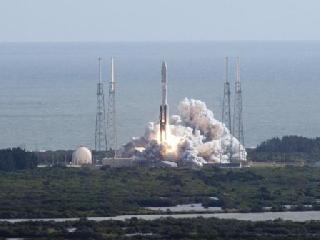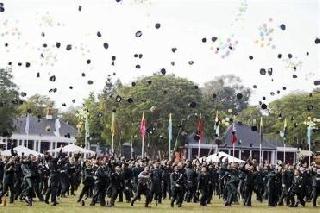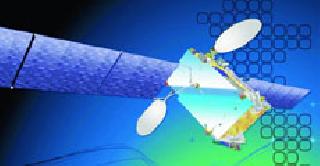
The Atlantic Ocean provides a backdrop as the United Launch Alliance Atlas V rocket clears the tower at Space Launch Complex 41 on Cape Canaveral Air Force Station in Florida. Photo: NASA/Darrell L. McCall.
CAPE CANAVERAL (AFP): NASA's Curiosity rover, the biggest, most sophisticated robotic explorer ever built, blasted off on a journey to Mars, where it will hunt for signs that life once existed there.
Curiosity, which is the size of a large car and weighs in at one ton, has a laser beam for zapping interesting rocks and a tool kit for analyzing their contents.
It carries a robotic arm, a drill, and a set of 10 science instruments including two colour video cameras.
Sensors will enable it to report back on the Martian weather and the levels of radiation in the atmosphere -- important data for NASA as it devises future human exploration missions.
Known formally as the Mars Science Laboratory (MSL), the spacecraft launched at 10:02 am (1502 GMT) atop an Atlas V rocket to begin its nearly nine-month trip to the Red Planet.
"Liftoff of the Atlas V with Curiosity, seeking clues to the planetary puzzle about life on Mars," said NASA commentator George Diller as the white rocket soared skyward from the Florida space pad.
The most advanced machine yet to roam the surface of Earth's nearest neighbour cost USD 2.5 billion to construct and launch, and has been described by NASA as "a dream machine."
It is powered by nuclear fuel and is about twice the size of NASA's twin solar-powered rovers Spirit and Opportunity that landed on Mars in 2004.
Scientists hope it will return valuable information about the past, present and future habitability of Mars to help the US space agency plan a human mission there, perhaps by the 2030s.
While the rover is not equipped to detect living organisms, it may find samples of organic carbon that indicate life once existed on Mars, or that perhaps it still does in microbial form.
One of the key instruments on board is a joint French-US project called the Chemistry and Camera investigation, which can emit a laser beam with the energy of a million light bulbs and tell scientists what makes up a Martian rock.
"It's like an arm that can reach out up to 25 feet (eight meters) away, brush something off, analyze it, actually look at the weathering surfaces and the interior of the rock at the same time," said Roger Wiens, principal investigator.
The rover's robotic arm, meanwhile, can drill into the ground or into rocks to create a powder, and a mobile chemistry lab on board can sift through the powder and tell scientists back on Earth what it contains.
Curiosity also has a Twitter account, @MarsCuriosity, from which it avidly tweeted about its liftoff and rocket ride.
"Spacecraft separation complete. Next stop: Mars!" it tweeted 44 minutes after launch.
"The flight looked great, our parameters looked great and we separated on time and we had some spectacular video that I'm sure went out that confirmed that we did separate the spacecraft and it looked to be in good shape," said NASA launch director Omar Baez.
In similar form, the White House Office of Science and Technology Policy tweeted its congratulations to NASA on the successful blastoff.
"Great beginning to most complicated mission & largest ever rover to go to Mars," it said.
The landing spot for Curiosity, the Gale Crater near Mars' equator, was chosen after lengthy study because it contains a three-mile (five-kilometer) high mountain and many layers of sediment that could reveal a lot about the planet's wetter past.
"It is going to look for places that are habitable either in the past or potentially even in the future or currently," said Mary Voytek, director of NASA's Astrobiology Programme.
The crater itself is at a low elevation so scientists believe that if water ever did pool on Mars, it likely found its way there. Everywhere that water exists on Earth, so does some form of life.
First, the rover has to travel 570 million kilometers, arrive intact and survive an elaborate rocketed-powered sky crane landing.
The project is meant to last two Earth years, or one full Martian year, but NASA hopes that like some of its other rovers in the past, Curiosity will outlive its expected potential.
 Previous Article
Previous Article Next Article
Next Article












The Indian Air Force, in its flight trials evaluation report submitted before the Defence Ministry l..
view articleAn insight into the Medium Multi-Role Combat Aircraft competition...
view articleSky enthusiasts can now spot the International Space Station (ISS) commanded by Indian-American astr..
view article